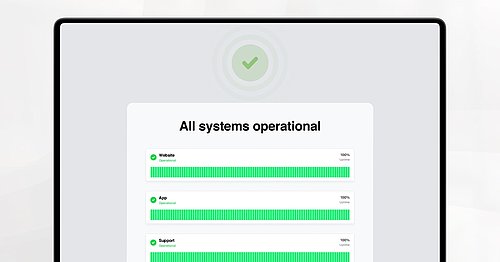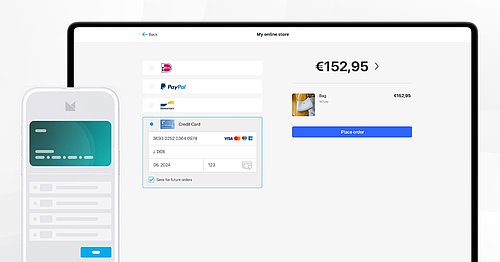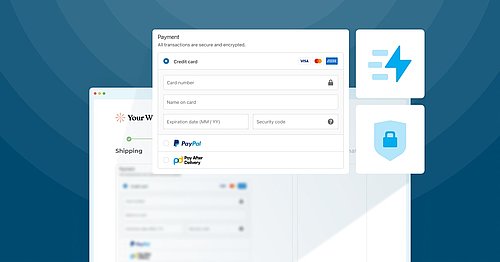Strategies to recover declined payments
It’s one of the most frustrating moments in ecommerce. For customers, it’s confusing. For merchants, it’s costly. Every failed transaction means potential revenue lost, support tickets raised, and a dent in customer trust.
But the good news is that many declines are avoidable. And with the right approach, you can turn them into recoverable moments rather than lost opportunities.
Let’s look at where declines happen most often and what you can do to reduce them.
When your payment is declined by the gateway
Sometimes a transaction declined by the gateway isn’t about the customer at all, rather it’s about the systems handling the payment. If communication breaks down between your checkout, the acquirer (the entity that processes your payments), and the card issuer (the customer’s bank), the transaction won’t go through.
Why it happens
Gateway risk rules triggered by high-value, duplicate, or frequent transactions.
Temporary connection or network issues.
Integration or API errors.
Invalid or missing payment data.
What you can do
Think of your gateway as your payment “bridge.” If that bridge fails, you need a reliable detour. By working with a provider that combines the roles of acquirer, processor, and gateway, you reduce the number of potential breakpoints.
At MultiSafepay, we manage the entire process for Visa and Mastercard directly, from checkout to bank authorization. By acting as both acquirer and processor, we remove unnecessary intermediaries and ensure your payments run fast and reliably. Our multiple data centers maintain continuous connections to the card schemes, keeping transactions stable even during peak traffic. That means fewer failed payments and a smoother experience for your customers.
When customers can’t complete authentication
Authentication is when a customer verifies their identity with their bank, often through 3D Secure (3DS). It’s an essential step for fraud prevention, but it’s also where many payments fail.
Why it happens
The customer makes a mistake entering verification details.
They time out or abandon the process midway.
The bank rejects an applied exemption to 3DS.
Redirects or slow pages interrupt the flow.
What you can do
Not all failed authentications are final. Many are soft declines or temporary rejections that can still be recovered. By choosing a PSP that uses smart retry logic, these transactions can be retried automatically through a different authentication route.
And if the customer simply didn’t finish checkout, that’s where MultiSafepay’s Second Chance steps in. Automated, customizable email reminders are sent one hour and again 24 hours later, each with a secure payment link. It’s a simple, proven way to recover up to 35% of abandoned payments without extra work on your side.
When authorization fails
Even when everything else works, the customer’s bank still makes the final call. Authorization is the moment the issuing bank decides whether to approve or decline a transaction, and it’s where most declines occur.
Why it happens
Insufficient funds or incorrect CVV (the two most common reasons).
Expired, lost, or blocked cards.
Risk filters or fraud detection at the bank’s end.
What you can do
Some of these declines can’t be prevented, but many can be managed. A PSP with card lifecycle management automatically updates expired or reissued cards, so your returning customers don’t run into unnecessary errors.
At MultiSafepay, we also handle soft declines through auto step-ups that automatically trigger extra authentication or retry the payment when the first attempt fails. Because we act as both acquirer and processor, we keep the process fast, consistent, and transparent, helping you maintain higher approval rates and fewer lost sales.
When payments fail after authorization
Even once a payment is approved, there’s still a final step: moving the money. This stage, known as clearing and settlement, involves multiple networks and partners, and if communication falters, the transaction can fail before completion.
Why it happens
Currency mismatches between the card and your account.
Unsupported transaction amounts or configurations.
Temporary network delays between banks or payment partners.
What you can do
The key here is prevention. Use a PSP that performs real-time data validation, automatically checking currency, thresholds, and card network compliance before sending the payment.
At MultiSafepay, this happens behind the scenes to stop avoidable declines before they reach the customer and keep international transactions running smoothly.
When downtime gets in the way
Sometimes the issue isn’t the card or the customer, it’s timing. Scheduled maintenance, sudden downtime, or network congestion can all disrupt live payments.
Why it happens
Temporary outages at your PSP or payment partners.
Connection timeouts during high-volume periods.
What you can do
Customers shouldn’t have to restart their checkout because of a short outage. Our Cart Alive keeps sessions active if a payment is interrupted, so the transaction can resume once systems are back online. Combined with retry URLs, secure links that let customers continue where they left off, ensures a seamless recovery process and protects your conversion rate even during busy periods.
What’s next: smarter systems, fewer declines
Payments are evolving fast, and the future looks promising for merchants who want to reduce declines.
Partial authorization: A new Visa initiative that lets banks approve part of a transaction when full funds aren’t available. Customers can then pay the rest using another method. This feature will also be supported in Click to Pay, where multiple cards are already stored in one wallet, making partial payments and retries faster and easier.
Stored multi-card wallets: Upcoming versions of Click to Pay will let customers securely store several payment methods in a single wallet. This reduces card-related declines and shortens the time it takes to retry a transaction.
Both developments mean fewer interruptions and more flexibility for your customers, and ultimately, more completed payments for your business.
Turning declines into opportunities
No merchant likes seeing a transaction fail, but each declined payment is a chance to learn, recover, and improve. By identifying where failures happen and partnering with a PSP that manages the full process, from gateway and acquiring to authentication and retry logic, you can dramatically increase your approval rates and keep your customers’ trust intact.
Your next step
Start by reviewing your own payment data. Where do most declines happen? Are they concentrated around a specific bank, method, or value range?
Then talk to your PSP. A good provider will help you analyze those patterns, identify the root causes, and suggest practical ways to recover more sales.
At MultiSafepay, we combine all layers of the payment process under one roof, acquiring, processing, gateway management, and recovery tools like Second Chance and Cart Alive. That means fewer moving parts, more control, and higher success rates.
Because every “payment declined” message isn’t an ending. It’s an opportunity to bring your customer back, complete the sale, and build lasting trust.



